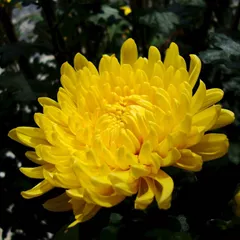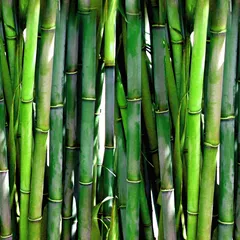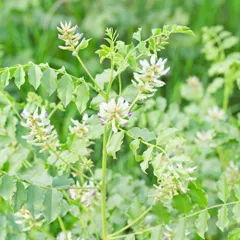Ling Jiao Gou Teng Tang
Chinese: Líng Jiǎo Gǒu Téng Tāng
Pinyin: 羚角钩藤汤
Other names: Antelope Horn and Uncaria Decoction, Gastrodia and Uncaria Combination, Cornu Antelopis Uncaria Decoction.








Ling Jiao Gou Teng Tang
Chinese: Líng Jiǎo Gǒu Téng Tāng
Pinyin: 羚角钩藤汤
Other names: Antelope Horn and Uncaria Decoction, Gastrodia and Uncaria Combination, Cornu Antelopis Uncaria Decoction.
Ingredients: 10 herbs
Category: Formulas that pacify and extinguish Internal Wind
- Cools the Liver
- Extinguishes Wind
- Increases Fluids
- Relaxes the sinews
Contraindications: Contraindicated in cases of wind due to Deficiency.
Source: Revised Popular Guide to the Discussion of Cold Damage (Qing dynasty)
The information provided here is not a replacement for a doctor. You shouldn't use it for the purpose of self-diagnosing or self-medicating but rather so you can have a more informed discussion with a professional TCM practitioner.
Ling Jiao Gou Teng Tang is a 10-ingredient Chinese Medicine formula with Saiga Antelope's Horns (Ling Yang Jiao) and Gambir Stems And Thorns (Gou Teng) as principal ingredients.
Invented in Qing dynasty, it belongs to the category of formulas that pacify and extinguish Internal Wind. Its main actions are: 1) cools the Liver and 2) extinguishes Wind.
In Chinese Medicine health conditions are thought to arise due to "disharmonies" in the body as a system. These disharmonies are called "patterns" and the very purpose of herbal formulas is to fight them in order to restore the body's harmony.
In this case Ling Jiao Gou Teng Tang is used by TCM practitioners to fight patterns like Liver Yang Rising, Liver Wind agitating Internally due to extreme Heat or Liver Wind agitating Internally due to Liver Fire. From a Western Medicine standpoint, such patterns can give rise to a range of conditions such as encephalitis, meningitis or dysentery for instance.
On this page, after a detailed description of each of the ten ingredients in Ling Jiao Gou Teng Tang, we review the patterns and conditions that Ling Jiao Gou Teng Tang helps treat.
The ten ingredients in Ling Jiao Gou Teng Tang

Ling Yang Jiao is a king ingredient in Ling Jiao Gou Teng Tang. Like the name indicates, it means it has more power than other ingredients in the formula.
1. Saiga Antelope's Horns (Ling Yang Jiao)
Part used: The horn
Nature: Cold
Taste(s): Salty
Category: Herbs that pacify Internal Liver Wind and stop Tremors
Ling Yang Jiao enters the Liver and Heart channels where it pacifies the Liver, extinguishes Wind, and clears Heat.

Gou Teng is a king ingredient in Ling Jiao Gou Teng Tang. Like the name indicates, it means it has more power than other ingredients in the formula.
2. Gambir Stems And Thorns (Gou Teng)
Part used: Dried stems and thorns from the branches
Nature: Cool
Taste(s): Sweet
Meridian affinity: LiverPericardium
Category: Herbs that pacify Internal Liver Wind and stop Tremors
Gou Teng restores the proper relationship between the Pericardium (Fire in the Five-Phases Theory) and the Liver (Wood) which helps extinguish Internal Wind.

Sang Ye is a deputy ingredient in Ling Jiao Gou Teng Tang. This means it helps the king ingredient(s) treat the main pattern or it serves to treat a coexisting pattern.
3. Mulberry Leaves (Sang Ye)
Part used: Dried leaves
Nature: Cold
In general Sang Ye's main actions are as follows: "Relieves the Exterior and clears Heat. Clears Heat in the Lung with associated Dryness. Clears the Liver for either Wind-Heat or Yin Deficient Heat. Cools the Blood."
In the context of Ling Jiao Gou Teng Tang, it is used because it dispels Wind and clears Heat from the Liver and Lungs.

Ju Hua is a deputy ingredient in Ling Jiao Gou Teng Tang. This means it helps the king ingredient(s) treat the main pattern or it serves to treat a coexisting pattern.
4. Chrysanthemum Flowers (Ju Hua)
Part used: Dried capitulum
Nature: Cool
In general Ju Hua's main actions are as follows: "Relieves the Exterior and clears Heat. Relieves Wind-Heat from the Liver channel and clears the eyes. Cools Heat of the Liver and Kidney due to Yin Deficiency. Relieves patterns of Liver Yang rising."
In the context of Ling Jiao Gou Teng Tang, it is used because it dispels Wind and clears Heat from the Liver and Lungs.

Bai Shao is an assistant ingredient in Ling Jiao Gou Teng Tang. This means that it either serves to reinforces the effect of other ingredients or it moderates their toxicity.
5. White Peony Roots (Bai Shao)
Part used: Dried root
Nature: Neutral
Meridian affinity: LiverSpleen
Category: Tonic herbs for Blood Deficiency
In general Bai Shao's main actions are as follows: "Tonifies the Blood and preserves the Yin. Nourishes the Liver and assists in the smooth flow of Qi. Regulates the meridians and eases the pain."
In the context of Ling Jiao Gou Teng Tang, it is used because it nourishes the Yin and increases the Fluids and thereby softens the Liver and relaxes the sinews.

Di Huang is an assistant ingredient in Ling Jiao Gou Teng Tang. This means that it either serves to reinforces the effect of other ingredients or it moderates their toxicity.
6. Unprepared Rehmannia (Di Huang)
Part used: Prepared dried root tuber
Nature: Cold
Taste(s): Sweet
Meridian affinity: HeartKidneyLiver
Category: Herbs that cool the Blood
In general Di Huang's main actions are as follows: "Expels Heat by Cooling Blood. Tonifies Yin by promoting Fluid production. Soothes the Heart by calming Blazing Fire. Cools and nourishes."
In the context of Ling Jiao Gou Teng Tang, it is used because it nourishes the Yin and increases the Fluids and thereby softens the Liver and relaxes the sinews.

Chuan Bei Mu is an assistant ingredient in Ling Jiao Gou Teng Tang. This means that it either serves to reinforces the effect of other ingredients or it moderates their toxicity.
7. Sichuan Fritillary Bulbs (Chuan Bei Mu)
Part used: Dried bulb
Nature: Cool
In general Chuan Bei Mu's main actions are as follows: "Clears Hot Phlegm and stops cough. Clears Lung Heat caused by Yin Deficiency. Clears Heat and reduces hard lumps and swellings."
In the context of Ling Jiao Gou Teng Tang, it is used because it clears Heat and transforms Phlegm.

Zhu Ru is an assistant ingredient in Ling Jiao Gou Teng Tang. This means that it either serves to reinforces the effect of other ingredients or it moderates their toxicity.
8. Bamboo Shavings (Zhu Ru)
Part used: Dried middle shavings
Nature: Cool
Taste(s): Sweet
Meridian affinity: GallbladderStomachLung
In general Zhu Ru's main actions are as follows: "Clears Phlegm-Heat in the Lungs. Clears Heat in the Stomach and stops vomiting. Cools the Blood and stops bleeding."
In the context of Ling Jiao Gou Teng Tang, it is used because it clears Heat and transforms Phlegm.

Fu Shen is an assistant ingredient in Ling Jiao Gou Teng Tang. This means that it either serves to reinforces the effect of other ingredients or it moderates their toxicity.
9. Host-Wood Poria (Fu Shen)
Part used: The part of the mushroom that is attached to the host-wood, dried
Nature: Neutral
Taste(s): Sweet
In general Fu Shen's main actions are as follows: "Calms the Mind (Shen) and promote urination."
In the context of Ling Jiao Gou Teng Tang, it is used because it addresses the irritability and restlessness caused by Heat harassing the Mind.

Gan Cao is an envoy ingredient in Ling Jiao Gou Teng Tang. This means that it directs the formula towards certain area of the body and/or harmonizes the actions of other ingredients.
10. Liquorice (Gan Cao)
Part used: Dried root and rhizome
Nature: Neutral
Taste(s): Sweet
Meridian affinity: HeartLungSpleenStomach
Category: Tonic herbs for Qi Deficiency
In general Gan Cao's main actions are as follows: "Tonifies the Basal Qi and nourishes the Spleen Qi. Clears Heat and dispels toxicity. Moistens the Lungsexpel phlegm and stop coughing. Relieves spasms and alleviates pain. Harmonizes and moderates the effects of other herbs."
In the context of Ling Jiao Gou Teng Tang, it is used because it regulates and harmonizes the actions of the other ingredients.
Conditions and patterns for which Ling Jiao Gou Teng Tang may be prescribed
It's important to remember that herbal formulas are meant to treat patterns, not "diseases" as understood in Western Medicine. According to Chinese Medicine patterns, which are disruptions to the body as a system, are the underlying root cause for diseases and conditions.
As such Ling Jiao Gou Teng Tang is used by TCM practitioners to treat five different patterns which we describe below.
But before we delve into these patterns here is an overview of the Western conditions they're commonly associated with:
Encephalitis Meningitis Dysentery Pneumonia Cerebrovascular disease Eclampsia
Again it wouldn't be correct to say "Ling Jiao Gou Teng Tang treats encephalitis" for instance. Rather, Ling Jiao Gou Teng Tang is used to treat patterns that are sometimes the root cause behind encephalitis.
Now let's look at the five patterns commonly treated with Ling Jiao Gou Teng Tang.

The Liver is a so-called "Zang" Organ. Learn more about the Liver in Chinese Medicine
Liver Yang Rising
Pulse type(s): Wiry (Xian)
Tongue color: Red
Symptoms: Tinnitus Deafness Insomnia Headaches Dizziness Dry mouth Dry throat Stiff neck Dry stools Irritability Blurred vision Stiff shoulder Feeling work-up Stiff upper back Outbursts of anger Soreness and weakness of the knees Stiffness in the neck shoulder and upper back
Ling Jiao Gou Teng Tang is sometimes prescribed by TCM practitioners to treat Liver Yang Rising. This pattern leads to symptoms such as headaches, dizziness, tinnitus and deafness. Patients with Liver Yang Rising typically exhibit wiry (Xian) pulses as well as Pale, normal or slightly red on the sides with no coating.
Long term Deficiency of Liver Yin, Liver Blood or Kidney Yin can cause Liver Yang rising upwards. This pattern is also called "Arrogant Liver Yang". If left unchecked for many years, it can lead to Liver Wind Agitating Internally.
The symptoms mentioned here are fairly similar to these of Stagnant... read more about Liver Yang Rising

The Liver is a so-called "Zang" Organ. Learn more about the Liver in Chinese Medicine
Liver Wind agitating Internally due to extreme Heat
Pulse type(s): Rapid (Shu), Wiry (Xian), Full (Shi)
Tongue coating: Thick coating, Yellow coating
Tongue color: Red
Tongue shape: Stiff
Symptoms: Coma Tics Tingling Numbness Dizziness Paralysis Convulsions Opisthotonos Tremor of limbs High temperature Rigidity of neck
Ling Jiao Gou Teng Tang is sometimes prescribed by TCM practitioners to treat Liver Wind agitating Internally due to extreme Heat. This pattern leads to symptoms such as high temperature, convulsions, rigidity of neck and tremor of limbs. Patients with Liver Wind agitating Internally due to extreme Heat typically exhibit rapid (Shu), wiry (Xian) or full (Shi) pulses as well as Deep red stiff tongue with dry yellow coating .
The most typical manifestation of Internal Wind is tremor, tic, numbness and tingling, dizziness, convulsions and paralysis.
Other symptoms are depends on the causes of this Internal Wind. When it is derived from extreme Heat, there are additional manifestation of high temperature.
The invasion... read more about Liver Wind agitating Internally due to extreme Heat

The Liver is a so-called "Zang" Organ. Learn more about the Liver in Chinese Medicine
Liver Wind agitating Internally due to Liver Fire
Pulse type(s): Rapid (Shu), Wiry (Xian)
Symptoms: Tremor Thirst Tinnitus Deafness Red face Red eyes Dizziness Epistaxis Dry stools Dark Urine Haemoptysis Irritability Constipation Haematemesis Outbursts of anger Temporal headaches Dream disturbed sleep Bitter taste in the mouth
Ling Jiao Gou Teng Tang is sometimes prescribed by TCM practitioners to treat Liver Wind agitating Internally due to Liver Fire. This pattern leads to symptoms such as tremor, irritability, outbursts of anger and tinnitus. Patients with Liver Wind agitating Internally due to Liver Fire typically exhibit rapid (Shu) or wiry (Xian) pulses.
Liver Fire may generate Wind when it persists for some years. This phenomenon can be compared to a forest fire that generates strong winds.
Internal Wind is characterized by either movement or lack of movement, such as spasms, tics, tremors, numbness, dizziness, convulsions or paralysis. Which is... read more about Liver Wind agitating Internally due to Liver Fire

'Heat' as a body pattern in Chinese Medicine is one of the so-called "Eight Principles". Learn more about Heat pattern in Chinese Medicine
Heat victorious stirring Wind
Pulse type(s): Rapid (Shu), Wiry (Xian)
Symptoms: Fainting High fever Convulsions Opisthotonos Rigidity of neck Twitching of limbs Clenching of teeth Eyeballs turning up
Ling Jiao Gou Teng Tang is sometimes prescribed by TCM practitioners to treat Heat victorious stirring Wind. This pattern leads to symptoms such as high fever, fainting, twitching of limbs and convulsions. Patients with Heat victorious stirring Wind typically exhibit rapid (Shu) or wiry (Xian) pulses.
This is one of the five patterns of the Blood level, the fourth and last level of the Four Levels theory. This means this is a very serious pattern where an External Pathogen has penetrated deeply within the body.
Contrary to Empty-Wind agitating in the Interior, another pattern at this level, here... read more about Heat victorious stirring Wind

The Interior in Chinese Medicine is one of the so-called "Eight Principles". Learn more about Interior in Chinese Medicine
Interior Wind
Pulse type(s): Fine (Xi), Rapid (Shu), Wiry (Xian)
Symptoms: Coma Tics Fever Anger Tremor Insomnia Dry eyes Red eyes Red face Deafness Dizziness Paralysis Headaches Back pain Dry throat Convulsions Poor memory Irritability Constipation Eye deviation Blurred vision Scanty periods Tremor of limbs Mouth deviation Numbness in the limbs Dream disturbed sleep
Ling Jiao Gou Teng Tang is sometimes prescribed by TCM practitioners to treat Interior Wind. This pattern leads to symptoms such as convulsions, tremor of limbs, dizziness and paralysis. Patients with Interior Wind typically exhibit fine (Xi), rapid (Shu) or wiry (Xian) pulses.
Interior Wind is mostly referred to be the Liver Wind. There are 4 types of Interior Liver Wind due to the original causes:
1. Liver Wind agitating Internally due to Liver Fire
2. Liver Wind agitating Internally due to extreme Heat
Formulas similar to Ling Jiao Gou Teng Tang
E Jiao Ji Zi Huang Tang is 50% similar to Ling Jiao Gou Teng Tang
Bai He Gu Jin Tang is 40% similar to Ling Jiao Gou Teng Tang
Yang Yin Qing Fei Tang is 40% similar to Ling Jiao Gou Teng Tang
Sang Ju Yin is 30% similar to Ling Jiao Gou Teng Tang
Dang Gui Yin Zi is 30% similar to Ling Jiao Gou Teng Tang
Da Huang Zhe Chong Wan is 25% similar to Ling Jiao Gou Teng Tang














